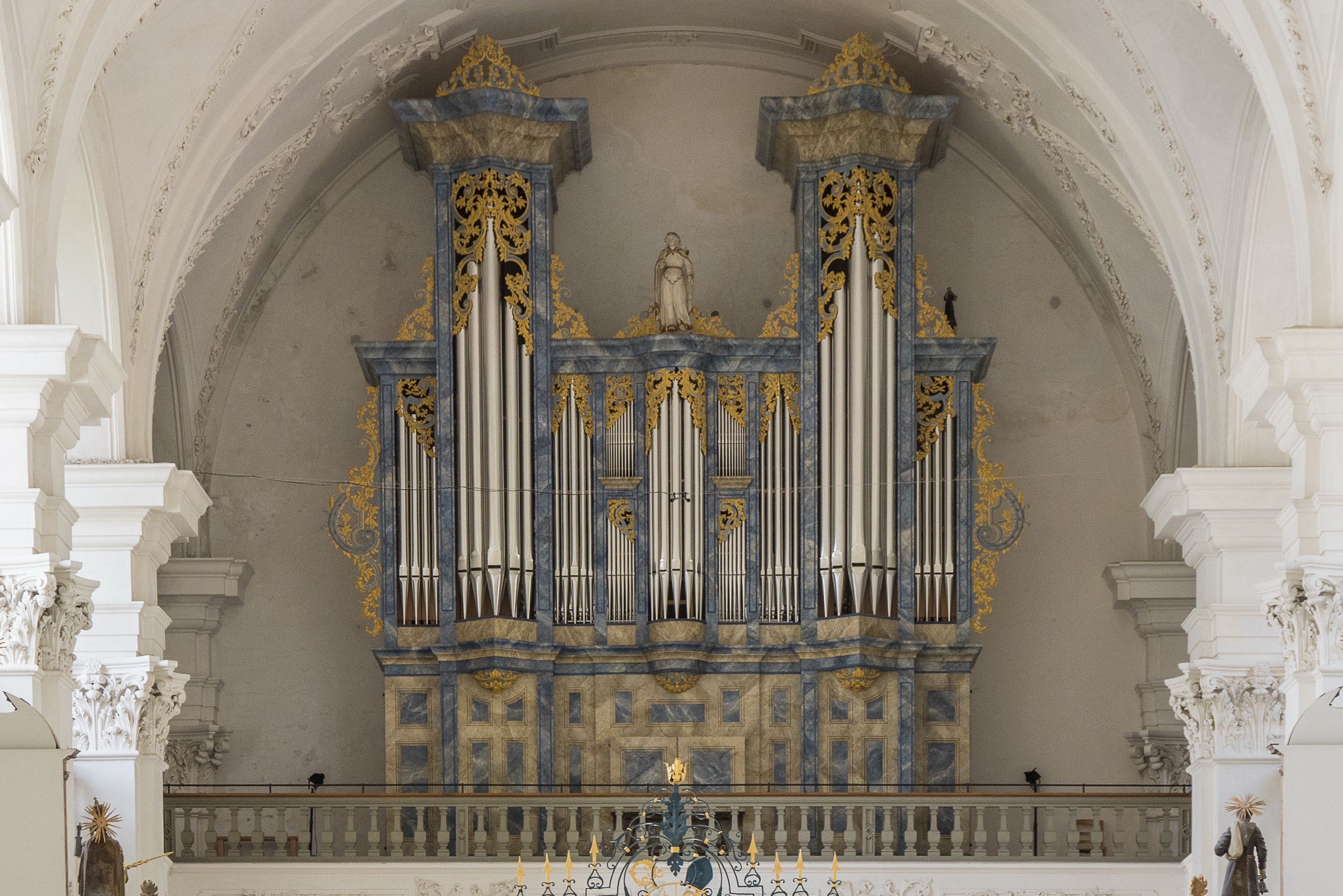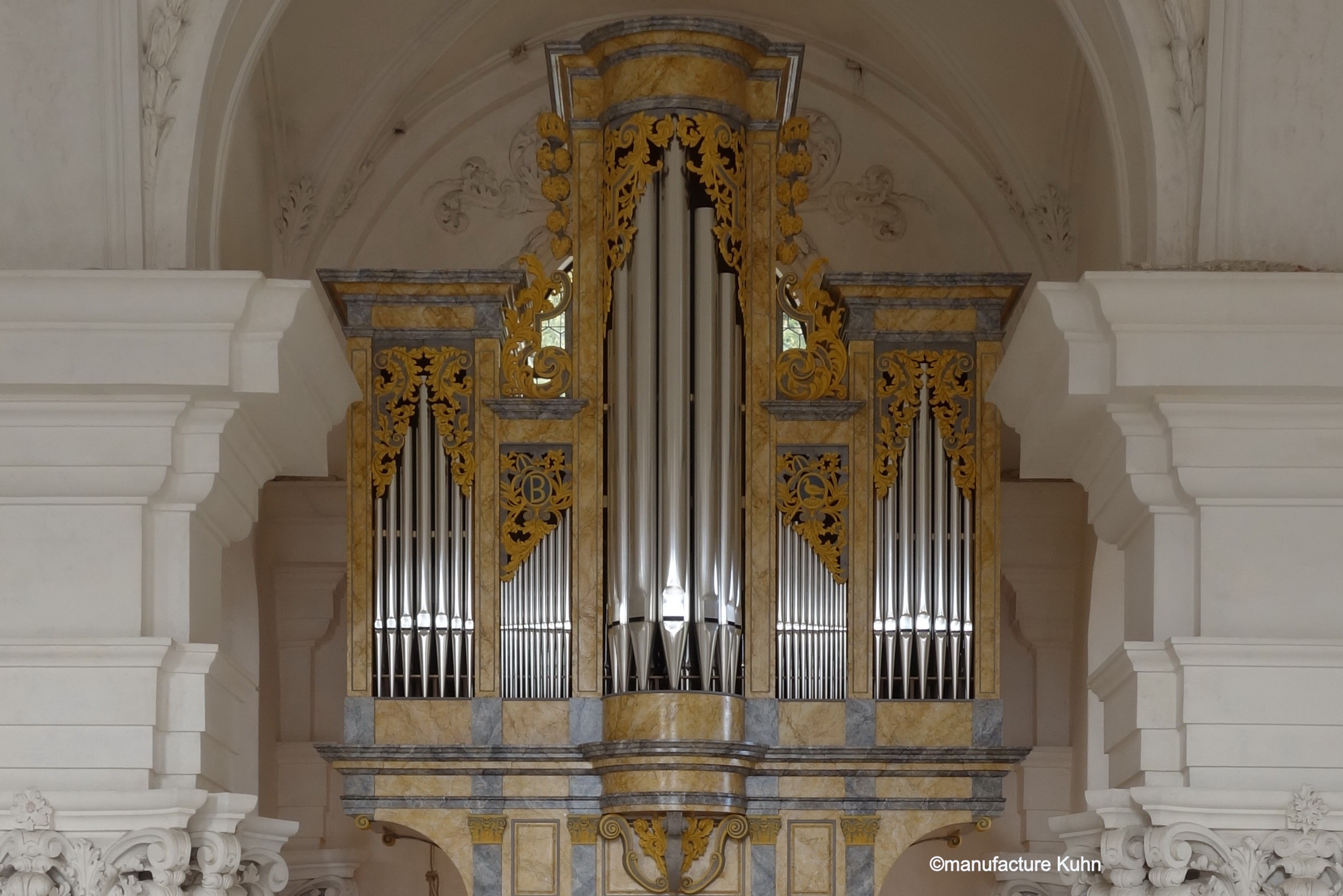German Organ in Bellelay – Great Organ
Sud-Germany style at Bellelay Abbey - Great organ - KUHN manufacture
The great Bossard organ of the former Premonstratensian monastery of Bellelay, which dated back to 1721, disappeared during the French Revolution.
Among the visible traces of the instrument, the most mysterious was its silhouette: it was drawn on the west wall, like a memorial, seeming to express the expectation of its rebirth. In addition to parts of the pipe-shades preserved in the La Chaux-de-Fonds museum, the original composition was also available, recorded in full in the Silbermann archives.
Kuhn benefited from the precise knowledge of the characteristics of Bossard’s work acquired from the restoration of the Sankt Urban organ in the canton of Lucerne in 1993. The whole team visited other organs by Bossard to specify details of the project.
For Wolfgang Rehn, “the Bossard-style Kuhn organ” is one of the highlights of his career: “For the first time we were able to apply decades of experience in restoration to the construction of a new instrument in authentic baroque style. Such opportunities are rare. In that sense, I think this fascinating project was also a wonderful gift!”
The former Bellelay Abbey is no longer used for liturgical purposes and there were therefore no musical demands for services. As a result, Kuhn was able to design the organ to meet very stringent requirements regarding pitch, temperament and range of the keyboards, including split sharps. This project also left room for artistic freedom. In conclusion, while it is obviously impossible for it to be an original by Bossard, it is indeed a “true Kuhn organ in the style of Bossard”.

































